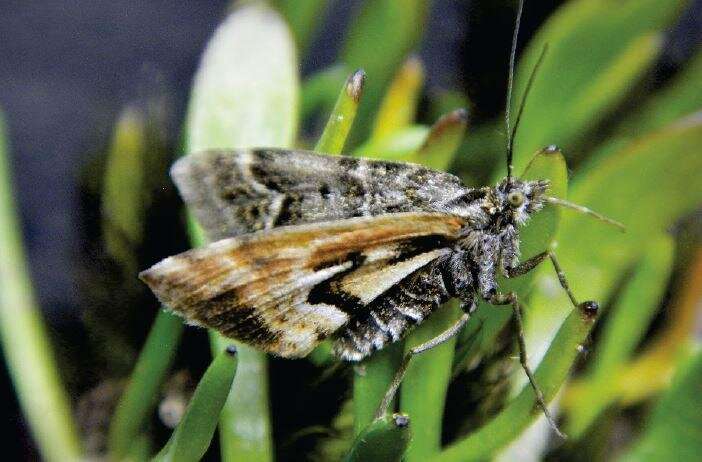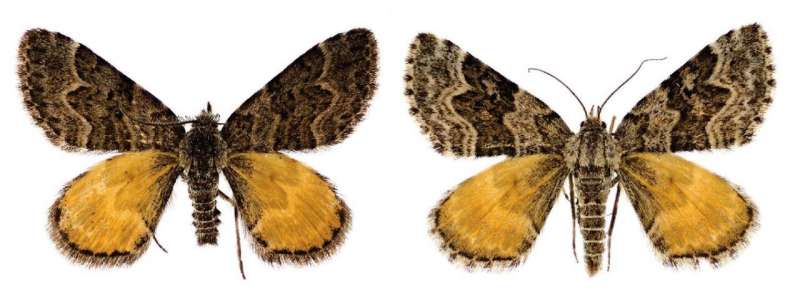New to science New Zealand moths link mythological deities to James Cameron's films

In an unexpected discovery from the South Island (New Zealand), two species of narrowly distributed macro-moths were described as new species. Interestingly, both Arctesthes titanica and Arctesthes avatar were named after mythological deities and top-grossing blockbusters by famous filmmaker James Cameron: Titanic and Avatar, respectively.
Each of the newly described species are believed to be restricted to only a couple of subalpine/alpine localities. Therefore, they are particularly vulnerable to extinction and need to be "considered of very high priority for conservation", point out New Zealand scientists Brian Patrick (Wildland Consultants Ltd), Hamish Patrick (Lincoln University) and Dr. Robert Hoare (Manaaki Whenua-Landcare Research) in their paper in the open-access journal Alpine Entomology.
Because of its relatively large size, one of the new discoveries: A. titanica, was named in reference to the Titans: the elderly gods in Greek mythology and the legendary, if ill-fated, record-breaking passenger ship 'Titanic', which became the subject of the famous 1997 American epic romance and disaster film of the same name. Unfortunately, the moth's small wetland habitat is located in an area that is currently facing a range of damaging farming practices, such as over-sowing, grazing, stock trampling and vehicle damage.
On the other hand, A. avatar received its name after Forest & Bird, the New Zealand conservation organisation that was behind the 2012 BioBlitz at which the new species was collected, ran a public competition where "the avatar moth" turned up as the winning entry. The reference is to the indigenous people and fauna in Avatar. Just like them, the newly described moth is especially vulnerable to habitat change and destruction. In addition, the study's authors note that the original avatars came from Hindu mythology, where they are the incarnations of deities, including Vishnu, for example, who would transform into Varaha the boar.

In conclusion, the scientists point out that future studies to monitor and further understand the fauna of New Zealand are of crucial importance for its preservation:
"Quantitative studies as well as work on life histories and ecology are particularly needed. Already one formerly common endemic geometrid species, Xanthorhoe bulbulata, has declined drastically and is feared possibly extinct: its life history and host-plant have never been discovered. Without further intensive study of the fauna of modified and threatened New Zealand environments, we will be unable to prevent other species slipping away."
More information: Brian H. Patrick et al, Review of the endemic New Zealand genus Arctesthes Meyrick (Lepidoptera, Geometridae, Larentiinae), with descriptions of two new range-restricted species, Alpine Entomology (2019). DOI: 10.3897/alpento.3.33944
Provided by Pensoft Publishers



















